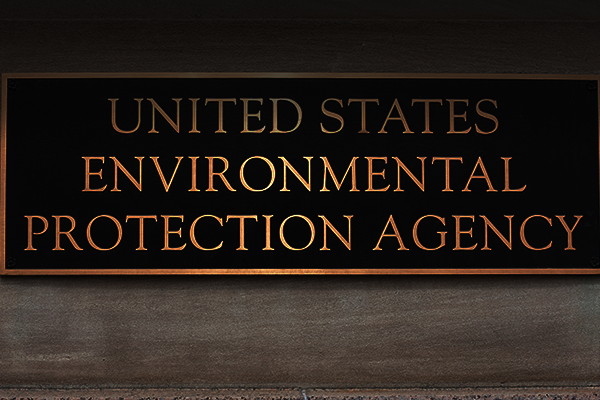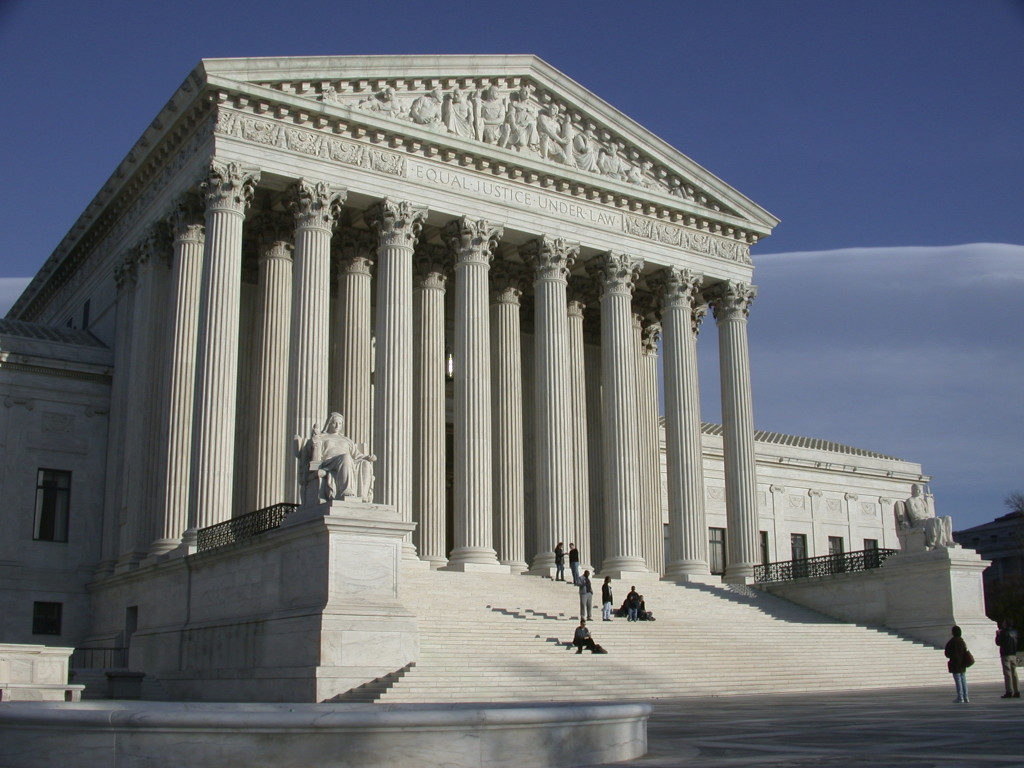10 Reasons States Should Not Submit a State Plan

The EPA is set to finalize its “Clean Power Plan”, or Climate Rule, in the next few months. The proposed rule will dramatically harm American families and businesses with little to no benefits to show for it—environmental or otherwise. Many also consider the proposed rule to be a federal takeover of the electricity system, traditionally an area left to the states to regulate. Now, states must decide how they should respond to best defend their sovereignty and protect their residents. Primarily, states are deciding whether to submit a state plan or exercise their rights under the Clean Air Act. We want to be clear: we are not urging states to do something illegal. It is perfectly legal and contemplated by the Clean Air Act that states are not required to submit state plans. States should not submit a plan—they have nothing to gain, but much to lose.
Before we explain the 10 reasons why states should not submit a plan, we first need to explain that these regulations are designed to drive up the cost of electricity. That is the point. Closing low-cost, reliable coal-fired power plants and replacing them with anything—even low-cost combined cycle natural gas plants—will still drive up electricity rates. The rates impact gets much worse when trying to replace coal with wind, because wind plus the necessary natural gas backup will produce electricity that is, on average, three times as expensive as the average existing coal-fired power plants.[1] We believe that policies designed to drive up electricity rates are incredibly harmful to America, and that’s why we advocate for not submitting a state plan.
- State resistance is the best chance to either delay or force the rule to be withdrawn –The EPA does not have the resources to administer federal plans for several states. If a handful of states opt to not submit a state plan, this will put the EPA in a tenuous position. Moreover, without states being complicit in the federal takeover, the EPA will have to determine how to reach their desired emission goals within the confines of existing power plants. This means removing substantial available baseload power that keeps the lights on for most families and businesses. If EPA were to do this, it would threaten the reliability of the electric grid and could impose rolling blackouts or brownouts across large swaths of the country. This is not politically viable. Instead, if enough states do not submit plans, the EPA will be forced to reconsider their emission targets and possibly withdraw the rule. Worst case, this gives the legal challenge a chance to play out while the EPA determines how to proceed.
- State plans undermine state authority with no actual flexibility – Traditional state prerogatives over power production, distribution, and consumption within the state could be permanently transferred to the federal government if state plans are submitted and approved by the EPA. As former EPA General Counsel Roger Martella has noted in legal analyses, this extends beyond “core compliance responsibilities of State air regulators and utility commissions” and includes “details as minor as emissions monitoring and verifications systems.” This is accompanied with virtually no flexibility to adjust energy policy in response to the changing needs of a state. Throwing all appearance of cooperative federalism out the window, the EPA made this point clear several times in its notes associated with the proposed rule.[2]
- Submitting a state plan is not the end of the story; you could still end up with a federal plan – Some say submitting a state plan will keep the power at the state level and minimize the pain. EPA likes to make the same argument, often talking about “state flexibility.” But the history of the Obama Administration has made it clear that submission of a state plan is not the end of the story. On 52 occasions, the Obama administration has taken state plans and turned them into federal plans.[3] During the two Bush administrations and the Clinton administration, this only happened 7 times. The EPA will get the outcome they want no matter what a state does.
- State plans undermine legal challenges and open the door for future federal takeovers – EPA has the authority under the Clean Air Act to regulate pollution emissions. This regulation goes far beyond regulating actual emissions of carbon dioxide, but into the use of electricity and which power plants should be turned on to meet demand. The EPA is making a big leap in its regulatory authority by going beyond the power plant (“outside the fence”) and claiming it can regulate any entity that emits carbon dioxide under this rule on carbon dioxide emissions for power plants. States who submit plans outlining emission cuts beyond the fence line arguably consent to this transfer of power. If successful at using this framework to take over the electricity system, EPA will then have precedent to use this new regulatory authority in other sectors of the economy traditionally left to states (i.e. refining, manufacturing). This concession runs counter to many states’ anticipated lawsuit challenging this federal overreach. If history is any guide, once power is transferred, it rarely returns to the state.
- Your state plan will quickly become the “Sierra Club Plan” – It is interesting that anti-energy special interests want states to submit plans. Groups like Sierra Club and NRDC believe state plans will help environmental groups achieve their goals. Unless the utilities and environmental groups have the same goals, both the utilities and environmental groups cannot be right. Environmental special interest groups like state plans because it will give them leverage through legal action against the states. According to Dan Byers at the Chamber of Commerce, “The Sierra Club caught EPA’s hint, and has made realization of [state implementation plan] lawsuit exposure a priority.” They have openly advocated for state plans, indicating they will bring citizen suits to enforce state plans as they see fit with little to no flexibility or consideration of unique state needs. Under this scenario, state plans lose all semblance of state control and become beholden to anti-energy special interests.
- A state plan will expose businesses and private actors in your state to legal action –Upon submission of a state plan, citizen suits are likely to be brought to compel enforcement of carbon dioxide emission reductions promised by the state. Litigious environmental groups routinely exploit the “sue and settle” process to compel enforcement on a wide range of issues. Since most state plans will seek to count reductions from a combination of sources, including private offices, residences, and government buildings, many private parties could find themselves subject to enforcement actions brought by the EPA and anti-energy special interests. As Martella explains, a state plan “could expose States and these third parties to legal action under the citizen suit provisions of the [Clean Air Act].”[4] Even worse, states and private parties who find themselves in the EPA or Sierra Club’s crosshairs have no flexibility to deviate from EPA’s emission limits even if they become “unworkable, ineffective, or too costly,” according to Martella.[5]
- State plans lock states into the EPA’s current approach and the imposition of a federal plan does not foreclose states from later submitting a state plan – Implementation of the rule is almost assured if state plans are submitted. Citizen suits and EPA enforcement actions noted above will guarantee the state is locked into compliance. Contrarily, exercising the option afforded to states under the Clean Air Act to not submit a state plan does not prevent a state from submitting one down the road if circumstances change, legal challenges are resolved, or even the reception of a federal plan appears imminent, certain, and more painful. None of these factors will be at play until mid-2017 at the earliest. With enough opposition, the next Administration will be forced to dramatically alter or withdraw the rule entirely.
- EPA needs states to be complicit – The regulatory framework is intentionally designed to get states to take the lead so the EPA’s hands do not get as dirty. The Climate Rule will make energy more expensive, harm economic growth, and destabilize the power grid.[6] The less blame that can be placed at the EPA’s doorstep, the more likely this federal takeover is to succeed. This is similar to Obamacare, where the feds wanted states to set up their own health insurance exchanges so they would own some of the fallout for the failure.
- A state plan will render a legal victory irrelevant – Lawsuits against the EPA regarding this rule are expected, but as we recently witnessed with the Supreme Court’s ruling on the Mercury rule, we can win the legal battle and lose the policy war. Moving forward with implementation before full legal resolution all but guarantees that the damage will be done by the time the Supreme Court hears the case. Sadly, this plays right into EPA’s “regulate-now-determine-authority-later” approach. Just days before the Mercury decision, EPA Administrator Gina McCarthy reinforced this point while on the Bill Maher show: “We think we’re going to win because we did a great job on it. But even if we don’t, it was three years ago. Most of them are already in compliance, investments have been made, and we’ll catch up.”[7] About 40 gigawatts of generating capacity closed because of the Mercury rule that the Supreme Court shot down.[8] We should not repeat that.
- States can choose not to submit a state plan when a rule is too costly, complex, and ambiguous – As we’ve witnessed with previous rules out of the EPA, states can and do refuse to submit state plans when the rule presents serious technical and economic challenges. For example, 24 states refused to submit Good Neighbor SIPs (State Implementation Plans) under the Cross-State Air Pollution Rule (CSAPR). Missouri DNR’s justification for not submitting a SIP captures the reasoning well: “Typically we’ve relied on a FIP [Federal Implementation Plan] to address Missouri’s interstate transport obligations for ozone and particulate matter (e.g., CAIR & CSAPR). It’s challenging to rely on options other than a FIP because two years to complete the extensive technical evaluation, develop a SIP and get EPA approval is very aggressive.” This is on a two-year timeline for a SIP, as compared to a one-year timeline for state plans under the Climate Rule, which have a broader scope. Given the legal uncertainty around the Climate Rule and the change in Administrations in 2017, it would be wise for states to exercise their legal right and refuse to submit a state plan.
Once EPA finalizes its rule this summer, states will face huge pressure to submit plans. States should keep three things in mind: 1) not submitting a state plan is your right and has historical precedent, 2) there is no benefit to submitting a state plan now because EPA can override state plans it does not approve of and 3) it is never too late to submit a state plan (states have a right to submit a plan even after a federal plan is imposed). If enough states resist, the current administration will run out of time to impose federal plans and the task will fall to the next administration. In short, waiting costs you nothing, but there are certain costs to moving forward.
[1] See Tom Stacy and George Taylor, “What is the True Cost of Electricity?,” Institute for Energy Research, June 30, 2015, http://instituteforenergyresearch.org/analysis/what-is-the-true-cost-of-electricity/
[2] See Sidley Austin LLP, “Potential Enforcement Implications and Liabilities Associated with EPA’s Proposed Greenhouse Gas ESPS Rule,”
[3] See William Yeatman, “EPA’s 52nd Takeover of State Regulatory Program Provides Perfect Segue to New Paper on Cooperative Federalism in the Obama Age,” September 4, 2014, http://www.globalwarming.org/2014/09/04/epas-52nd-takeover-of-state-regulatory-program-provides-perfect-segue-to-new-paper-on-cooperative-federalism-in-the-obama-age/
[4] Roger Martella, “Potential Enforcement Implications and Liabilities Associated withEPA’s Proposed Greenhouse Gas ESPS Rule,” p. 1, http://www.energyxxi.org/sites/default/files/ESPS%20white%20paper%206.17.15.pdf
[5] Martella, p. 3.
[6] See IER, “EPA’s Power Plant Rule to Cost At Least $366 Billion,” October 23, 2014, http://instituteforenergyresearch.org/analysis/epas-power-plant-rule-cost-least-366-billion/
[7] See Timothy Cama and Lydia Wheeler, “Supreme Court overturns landmark EPA air pollution rule,” June 29, 2015, http://thehill.com/policy/energy-environment/246423-supreme-court-overturns-epa-air-pollution-rule
[8] See Energy Information Administration, Analysis of the Impacts of the Clean Power Plan, May 22, 2015, http://www.eia.gov/analysis/requests/powerplants/cleanplan/



